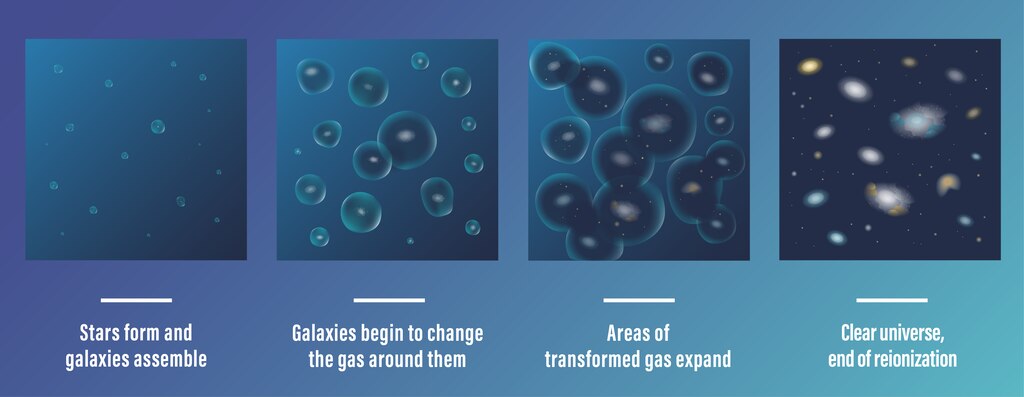When you look up at night, even if you’re in Baltimore or another city with bright lights, you can probably see at least a few stars in the sky. The points of light seem so natural that it’s hard to imagine a universe where they aren’t visible.
Go way, way back to just a few hundred million years after the Big Bang (which is estimated to have occurred over 13 billion years ago), though, and the night sky would look quite different. In the relatively early days of the universe, the whole cosmos was filled with opaque hydrogen gas that blocked some frequencies of light from reaching different stars and galaxies, according to NASA.
But sometime within the first billion years after the Big Bang, the gas became transparent, creating the clear and expansive views of the night sky we have today.
Researchers have long tried to explain what happened. Today, the Space Telescope Science Institute, based in Baltimore, announced that data from the James Webb Space Telescope has provided an answer.
The Baltimore Banner thanks its sponsors. Become one.
So what happened? The stars within those clouds of gas emitted enough light and heat that they ionized the gas around them, clearing up the view over hundreds of millions of years.

The institute compared it to a pea clearing the space inside a hot air balloon.
Over time, as stars formed within those cloudy regions, they ionized the gas, creating more transparent bubbles all around the universe. Eventually, those bubbles merged, creating the “clear and expansive views” of space we enjoy today.
The science behind it
Researchers made this discovery by aiming the telescope at a quasar — a supermassive, active black hole that is also extremely luminous. The quasar acts like a giant flashlight, highlighting the gasses between it and our telescopes, the release said.
As the light from the quasar traveled toward the telescope, it was either blocked by opaque gas or passed through transparent gas.
The Baltimore Banner thanks its sponsors. Become one.
“By illuminating gas along our line of sight, the quasar gives us extensive information about the composition and state of the gas,” Anna-Christina Eilers, a scientist at MIT and the lead author of a paper using the data, said in the release.
Scientists then used the telescope to find galaxies near the line of sight created by the quasar, and found that the galaxies are generally surrounded by regions of transparent gas that are about 2 million light-years in radius. That means, according to the release, that the James Webb Space Telescope saw galaxies in the process of clearing the space around them.
Researchers also confirmed that the black hole at the center of the quasar is the “most massive currently known in the early universe, weighing 10 billion times the mass of the Sun.”
Along with the release, NASA published an image of a field of view taken by the telescope that shows 20,000 galaxies between the Pisces and Andromeda constellations. The quasar that the field was anchored on is visible as a tiny pink starburst in the center of the image.





Comments
Welcome to The Banner's subscriber-only commenting community. Please review our community guidelines.